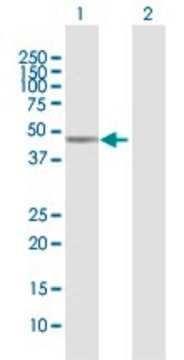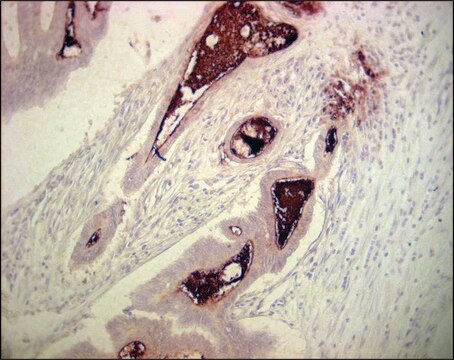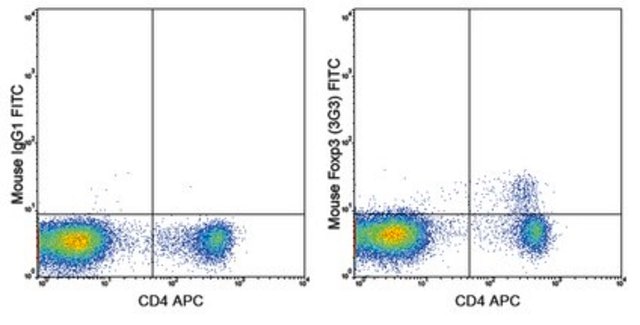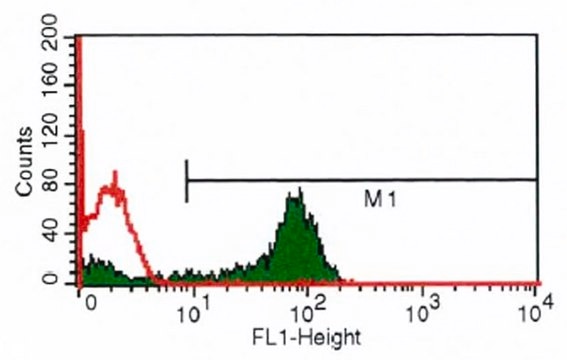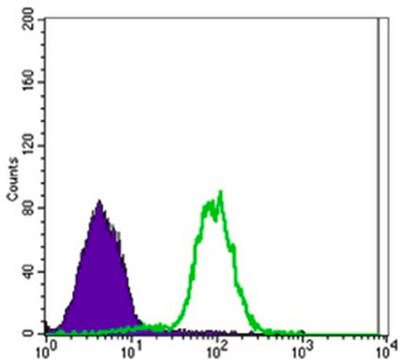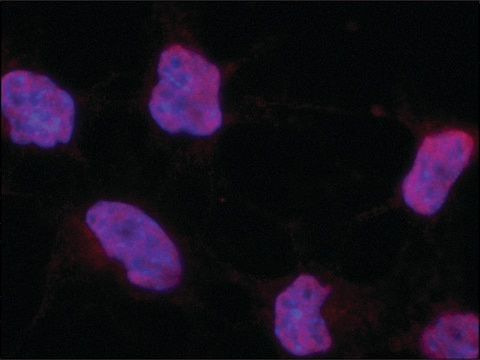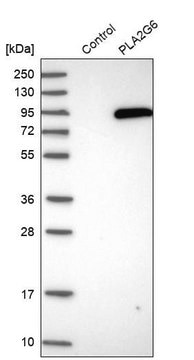MABF2160
Anti-MIC-A MIC-B Antibody, clone 6D4
clone 6D4, from mouse
Synonym(s):
MHC class I polypeptide-related sequence A/MHC class I polypeptide-related sequence B
About This Item
Recommended Products
biological source
mouse
antibody form
purified immunoglobulin
antibody product type
primary antibodies
clone
6D4, monoclonal
species reactivity
human
packaging
antibody small pack of 25 μg
technique(s)
flow cytometry: suitable
immunohistochemistry: suitable (paraffin)
inhibition assay: suitable
isotype
IgG2aκ
NCBI accession no.
UniProt accession no.
target post-translational modification
unmodified
Gene Information
human ... MICA(100507436)
Related Categories
General description
Specificity
Immunogen
Application
Flow Cytometry Analysis: A representative lot detected MIC-A and MIC-B in Flow Cytometry applications (Groh, V., et. al. (1999). Proc Natl Acad Sci U S A. 96(12):6879-84).
Inhibits Activity/Function Analysis: A representative lot inhibited cytotoxicity of ovary tumor-derived T cells against various cancer cell lines. (Groh, V., et. al. (1999). Proc Natl Acad Sci U S A. 96(12):6879-84).
Inflammation & Immunology
Quality
Flow Cytometry Analysis: 1 µg of this antibody detected MIC-A MIC-B in one million HeLa cells.
Target description
Physical form
Storage and Stability
Other Notes
Disclaimer
Not finding the right product?
Try our Product Selector Tool.
Certificates of Analysis (COA)
Search for Certificates of Analysis (COA) by entering the products Lot/Batch Number. Lot and Batch Numbers can be found on a product’s label following the words ‘Lot’ or ‘Batch’.
Already Own This Product?
Find documentation for the products that you have recently purchased in the Document Library.
Our team of scientists has experience in all areas of research including Life Science, Material Science, Chemical Synthesis, Chromatography, Analytical and many others.
Contact Technical Service